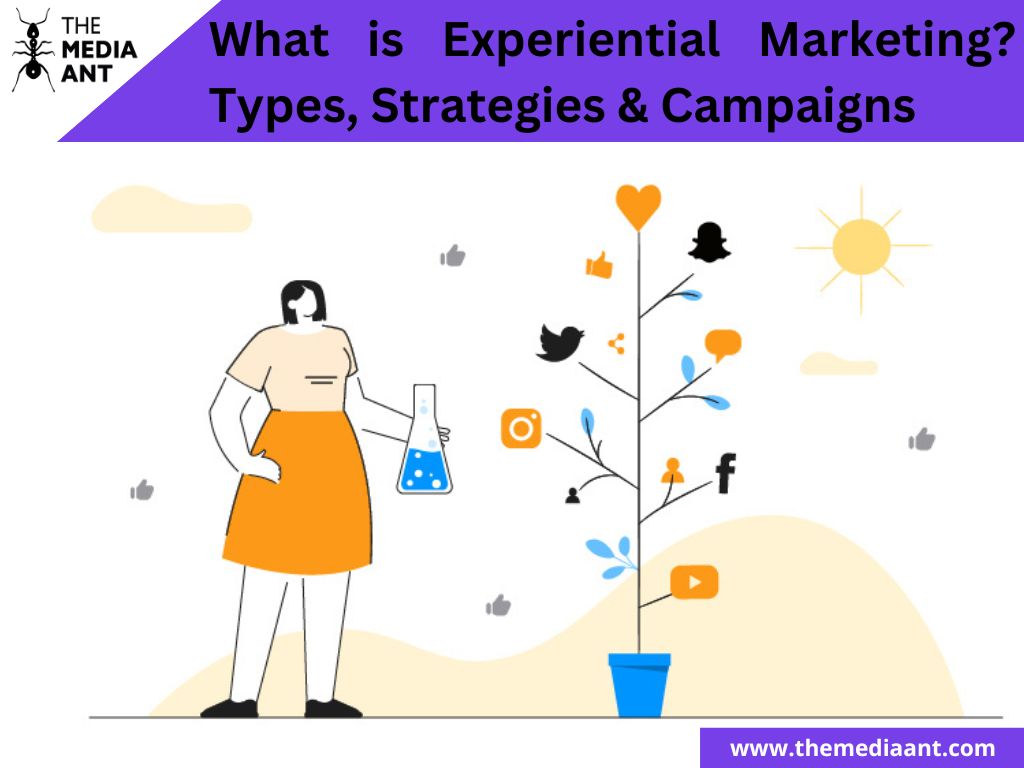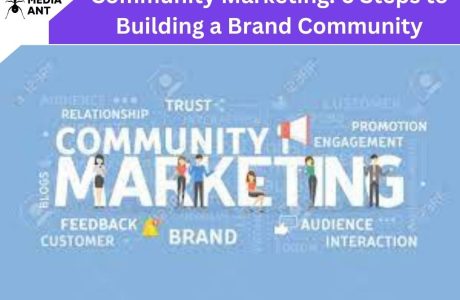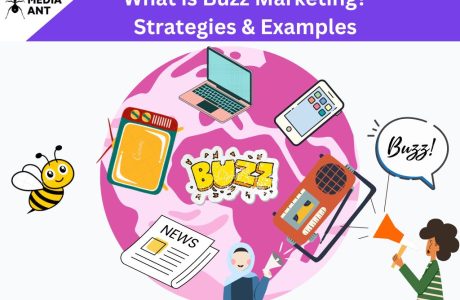Experiential marketing is a dynamic and immersive approach that goes beyond traditional advertising to engage consumers on a deeply personal level. In this blog, we’ll explore the essence of experiential marketing, shedding light on its various types, innovative strategies, and successful campaigns that have transformed the way brands connect with their audience. From interactive events and virtual reality experiences to guerrilla marketing tactics, we’ll delve into the diverse landscape of experiential marketing. Join us on this journey as we uncover how brands create memorable, emotionally resonant encounters, leaving a lasting impact on consumers in today’s competitive marketing arena.
What is Experiential Marketing?
Experiential marketing, also known as engagement marketing, is a dynamic strategy that focuses on creating immersive and memorable brand experiences for consumers. It goes beyond traditional advertising by involving customers directly in interactive, hands-on encounters that evoke emotions, connections, and lasting impressions. This approach often takes the form of events, pop-up shops, workshops, or interactive installations where consumers can engage with products, services, or brand values in a tangible way.
Experiential marketing aims to forge deeper relationships between brands and consumers by allowing them to actively participate and form personal connections, thereby enhancing brand loyalty and driving word-of-mouth promotion.
Types of Experiential Marketing
Here are some types of experiential marketing explained:
Guerrilla Marketing
Guerrilla marketing involves unconventional and attention-grabbing tactics to surprise and engage consumers in unexpected ways. It often employs public spaces for creative and memorable interactions, leaving a lasting impression through surprise, humour, or intrigue.
Brand Activation
Brand activation events are designed to bring a brand’s essence to life through interactive experiences. These events encourage consumers to engage with the brand’s products or services, fostering a deeper understanding and connection.
Event Marketing
Event marketing involves hosting or participating in events, such as trade shows, festivals, workshops, or seminars, where brands can directly interact with their target audience. This approach creates opportunities for hands-on engagement, networking, and showcasing products in a relevant context.
Retail Installations
Retail installations transform physical spaces like stores or pop-up shops into interactive environments. These installations encourage customers to explore products, test features, and engage with the brand more sensory and immersively.
Experiential Marketing Strategies
Experiential marketing strategies encompass a range of approaches to create engaging and memorable brand experiences. Here are a few effective strategies:
Live Events and Activations
Hosting live events, such as product launches, workshops, or interactive demonstrations, provides consumers with real-time engagement opportunities. These events allow attendees to experience the brand’s products or services in person, fostering personal connections and leaving a memorable impression.
Pop-Up Shops
Pop-up shops are temporary retail spaces that offer a unique and limited-time opportunity for consumers to engage with the brand. These spaces often feature exclusive products, interactive displays, and immersive environments, encouraging visitors to explore and interact with the brand in a fresh and exciting way.
Interactive Installations
Interactive installations are creatively designed physical setups that encourage participation and engagement. These installations can be placed in public spaces, events, or retail locations. They use elements like technology, art, or design to capture attention and provide an experiential connection to the brand.
Brand Immersion
Brand immersion experiences immerse participants in the brand’s values, mission, and story. These experiences create a strong emotional connection by allowing customers to understand and align with the brand’s identity deeply.
User-Generated Content Campaigns
Brands encourage customers to share their experiences through social media, generating authentic and relatable content. This strategy taps into the power of user-generated content to showcase real-life interactions with the brand and its products.
Sensory Experiences
Engaging multiple senses enhances the overall brand experience. Brands can incorporate sensory elements like scents, textures, sounds, and tastes to create a more immersive and memorable encounter.
Personalisation
Customising experiences based on individual preferences and needs creates a sense of exclusivity. Brands can use data to tailor interactions and offerings, making customers feel valued and understood.
Partnerships and Collaborations
Collaborating with influencers, artists, or other brands adds an extra layer of intrigue and excitement to experiential marketing efforts. These partnerships introduce new perspectives and expand the brand’s reach to new audiences.
Virtual and Augmented Reality
VR and AR technologies offer immersive experiences by blending the digital and physical worlds. Brands can create virtual showrooms, interactive product demos, or augmented reality games to engage consumers in innovative ways.
Surprise and Delight
Unexpected gestures, gifts, or interactions during customer interactions can create memorable moments. These surprising elements prompt customers to share their experiences and amplify positive brand sentiment.
Storytelling Experiences
Crafting immersive narratives around the brand’s products, values, or history engages customers on a deeper level. Story-driven experiences captivate emotions and encourage participants to become a part of the brand’s story.
Gamification
Incorporating game-like elements into brand experiences, such as challenges, quizzes, or rewards, drives engagement and encourages active participation from consumers.
Benefits of Experiential Marketing
Experiential marketing, also known as engagement marketing or event marketing, is a strategy that focuses on creating immersive and memorable experiences for customers, allowing them to engage with a brand or product in a unique and interactive way. This approach has gained significant popularity due to its ability to forge strong connections with customers and drive brand loyalty. Here are some benefits of experiential marketing, elaborated upon:
Emotional Connection and Engagement
Experiential marketing creates a direct and emotional connection between the brand and the consumer. By engaging multiple senses and creating memorable moments, brands can evoke emotions that are more likely to be remembered. These emotional connections foster a sense of attachment, making customers more likely to remember and talk about their experience with the brand. This emotional resonance can lead to stronger brand loyalty and advocacy.
Memorability
Experiences tend to be more memorable than traditional advertising methods like print or digital ads. When people actively participate in an event or activity, they form memories associated with the brand. This memorability can lead to better brand recall and word-of-mouth marketing, as customers are more likely to share their positive experiences with friends family, and on social media.
Audience Engagement and Interaction
Experiential marketing allows brands to interact directly with their target audience. Instead of being passive recipients of a message, customers become active participants. This engagement encourages two-way communication, enabling brands to receive immediate feedback, address concerns, and tailor their offerings to better match customer preferences.
Authenticity and Trust
Experiences are often perceived as more authentic compared to traditional advertising. Customers interacting with a brand firsthand can better understand its values, mission, and products. This transparency and authenticity build trust, as customers feel that the brand is trying to connect with them personally.
Storytelling Opportunities:
Experiential marketing provides an excellent platform for brands to tell their story in a compelling and interactive way. Brands can craft narratives that resonate with their target audience and share their journey, values, and the inspiration behind their products. This storytelling approach helps create a deeper emotional connection and can effectively communicate the brand’s identity.
Differentiation from Competitors:
In today’s crowded marketplace, it’s crucial for brands to stand out. Experiential marketing offers a unique opportunity to differentiate from competitors by offering something memorable and engaging. When customers have a positive and distinctive experience with a brand, they are more likely to remember it and choose it over alternatives.
Data Collection and Insights:
Experiential marketing events often provide a valuable opportunity for data collection. Brands can gather insights on customer preferences, behaviours, and reactions in real time. This data can then be used to refine marketing strategies, develop more targeted campaigns, and enhance products based on direct customer feedback.
Social Media Buzz and Virality:
Experiential marketing events are highly shareable on social media platforms. Customers with unique and exciting experiences are inclined to document and share them online. This user-generated content creates organic buzz and can go viral, increasing brand visibility and reach without the brand having to invest heavily in traditional advertising.
Best Experiential Marketing Campaigns
Warner Bros Pictures: Barbie Movie Selfie Generator
The highly anticipated film Barbie has been creatively marketed to fans of all ages and backgrounds — through unique trailers and immersive generative AI that let you become your own Barbie doll cover.
By visiting the website BarbieSelfie.ai, users were greeted with the message, “Welcome to Barbie Land, where you can be Barbie (or Ken). Click below to become an instant icon! #BarbieTheMovie”.
Greta Gerwig’s interpretation of Barbie supposedly leans into all the diverse and rare releases of Mattel toys, and their marketing team built on that idea by making an AI tool that allows users to identify as professionals in different fields, personalities, and colour stories.
This marketing campaign is a good example of an experiential marketing campaign as it makes moviegoers feel good to see themselves represented in the coming Barbie movie and makes them feel as though they’re a part of the Barbie fantasy experience that kids (and now adults) feel when they play with Barbie products.
It also serves as a movie promotion between friends, family, and followers as those who post the photos spread the movie release date as every image has its premiere date, July 21st, 2023, on every image generated.
Red Bull: Stratos
Red Bull has been at the forefront of extreme sports coverage for almost as long as the brand has existed. But the company brought its content marketing to new heights — a world-record height, actually.
Affectionately named Stratos, Red Bull’s superterrestrial marketing campaign featured Felix Baumgartner, a skydiver from Austria who partnered with Red Bull to set the world record for the highest skydive.
That record: 128,000 feet, about 24 miles above Earth’s surface. Gulp.
To pull off this amazing stunt, Red Bull housed Felix in a small communication capsule and sent him up to the stratosphere using a large helium-filled balloon. And what’s truly remarkable is that his ascent and preparation to jump alone, allowed him to break another record before landing safely back on Earth (spoiler alert): Red Bull streamed the entire event online, and saw the highest viewing traffic of any live stream ever broadcast on YouTube — at just over 8 million viewers.
Want to see that experience again? Check out Red Bull’s recap video below. I won’t lie, I indulged in a rewatching as I wrote this article.






A great insight into the world of experiential marketing This article excellently explains its types, strategies, and successful campaigns. This is an eye-opener for marketers who want to engage audiences in memorable ways. Thank you for sharing this valuable resource.
“Excellent overview of experiential marketing! The breakdown of types, strategies, and campaigns is super helpful for crafting impactful marketing experiences.”